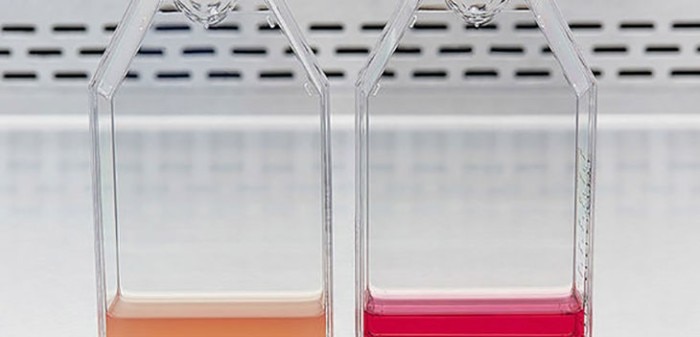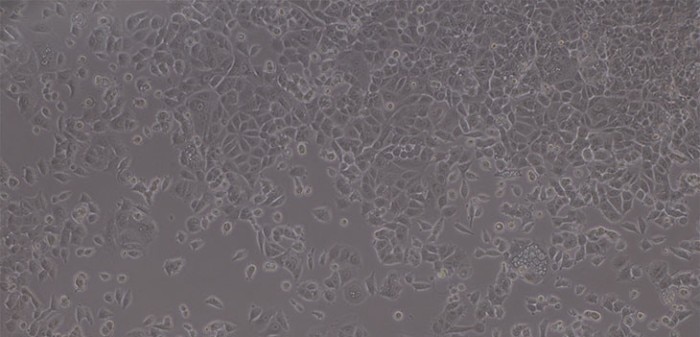メニュー
JP | JPY
-
-
-
- Challenges and Chances: A Review of the 1st Stem Cell Community Day
- Summertime, and the Livin’ Is Easy…
- Follow-on-Biologics – More than Simple Generics
- Bacteria Versus Body Cells: A 1:1 Tie
- Behind the Crime Scene: How Biological Traces Can Help to Convict Offenders
- Every 3 Seconds Someone in the World Is Affected by Alzheimer's
- HIV – It’s Still Not Under Control…
- How Many Will Be Convicted This Time?
- Malaria – the Battle is Not Lost
- Physicians on Standby: The Annual Flu Season Can Be Serious
- At the Forefront in Fighting Cancer
- Molecular Motors: Think Small and yet Smaller Again…
- Liquid Biopsy: Novel Methods May Ease Cancer Detection and Therapy
- They Are Invisible, Sneaky and Disgusting – But Today It’s Their Special Day!
- How Many Cells Are in Your Body? Probably More Than You Think!
- What You Need to Know about Antibiotic Resistance – Findings, Facts and Good Intentions
- Why Do Old Men Have Big Ears?
- The Condemned Live Longer: A Potential Paradigm Shift in Genetics
- From Research to Commerce
- Chronobiology – How the Cold Seasons Influence Our Biorhythms
- Taskforce Microbots: Targeted Treatment from Inside the Body
- Eyes on Cancer Therapy
-
-
-
-
-
- Challenges and Chances: A Review of the 1st Stem Cell Community Day
- Summertime, and the Livin’ Is Easy…
- Follow-on-Biologics – More than Simple Generics
- Bacteria Versus Body Cells: A 1:1 Tie
- Behind the Crime Scene: How Biological Traces Can Help to Convict Offenders
- Every 3 Seconds Someone in the World Is Affected by Alzheimer's
- HIV – It’s Still Not Under Control…
- How Many Will Be Convicted This Time?
- Malaria – the Battle is Not Lost
- Physicians on Standby: The Annual Flu Season Can Be Serious
- At the Forefront in Fighting Cancer
- Molecular Motors: Think Small and yet Smaller Again…
- Liquid Biopsy: Novel Methods May Ease Cancer Detection and Therapy
- They Are Invisible, Sneaky and Disgusting – But Today It’s Their Special Day!
- How Many Cells Are in Your Body? Probably More Than You Think!
- What You Need to Know about Antibiotic Resistance – Findings, Facts and Good Intentions
- Why Do Old Men Have Big Ears?
- The Condemned Live Longer: A Potential Paradigm Shift in Genetics
- From Research to Commerce
- Chronobiology – How the Cold Seasons Influence Our Biorhythms
- Taskforce Microbots: Targeted Treatment from Inside the Body
- Eyes on Cancer Therapy
-
-
JP | JPY
Sorry, we couldn't find anything on our website containing your search term.

The four pillars of cell culture integrity
Lab Academy
- 細胞生物学
- 細胞培養
- CO₂インキュベーター
- 細胞培養用消耗品
- FAQ
Daily monitoring of cell cultures using phase contrast microscopy enables you to recognize any unusual changes at an early stage. Each day that you examine your cells for confluency, take a closer look at your cells according to the following checklist:
Increased turbidity, as well as a rapid color change of medium containing phenol red as a pH indicator, strongly suggests a contamination. Watch out for bacteria, fungal colonies floating on the medium surface as well as ovoid bright particles between the cells, indicating a yeast contamination.
What does the medium look like?
Increased turbidity, as well as a rapid color change of medium containing phenol red as a pH indicator, strongly suggests a contamination. Watch out for bacteria, fungal colonies floating on the medium surface as well as ovoid bright particles between the cells, indicating a yeast contamination.
もっと読む
表示を減らす

Do cells proliferate?
Cells undergoing mitosis assume a round shape and partly detach from the surface. The occurrence of these cells in your cell culture is a sign of a healthy culture.
もっと読む
表示を減らす
Videos not loading, because cookies have been rejected. Change your

Do you see cells swimming in the medium?
An increased number of cells swimming in the medium can be a sign of a cell culture that has become overly confluent and which actually needs to be passaged. Cells start to die off and detach from the surface. Depending on the extent of die-off, a healthy culture may not be recoverable.
Vacuoles or granules?
Cytoplasmic vacuolation, as well as granules around the nucleus, indicate an unhealthy culture due to cellular damage, oxidative stress etc. Change of medium might be sufficient to remedy the problem, whereas in other cases cultures will have to be discarded due to serious causes (e.g. microbial contamination, senescence of the cell line, or inadequate medium or serum).
もっと読む
表示を減らす

Check your cell culture by microscope on a daily basis! It just takes a few minutes and contributes to the maintenance of consistent and optimized culture conditions, resulting in high reproducibility of your experimental data.
もっと読む
表示を減らす
